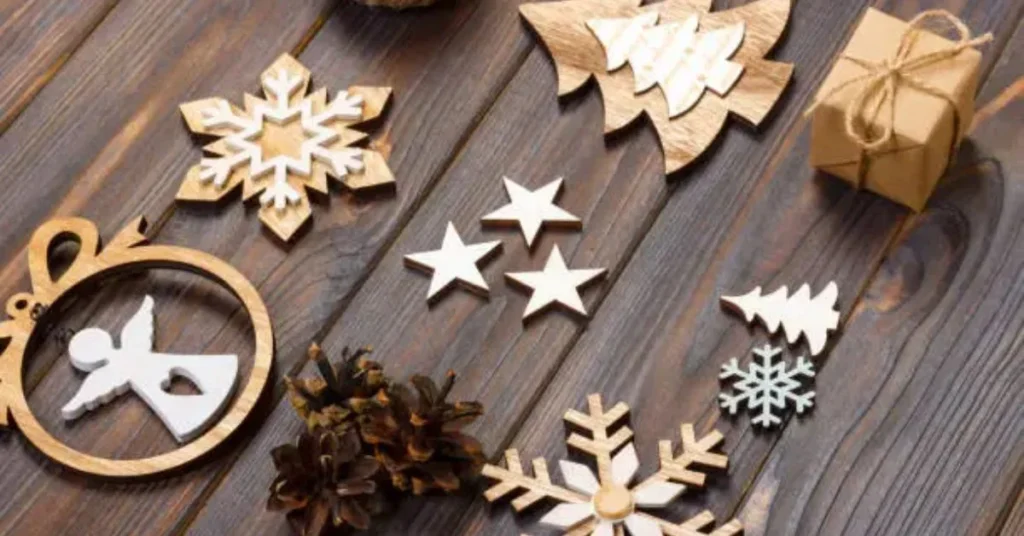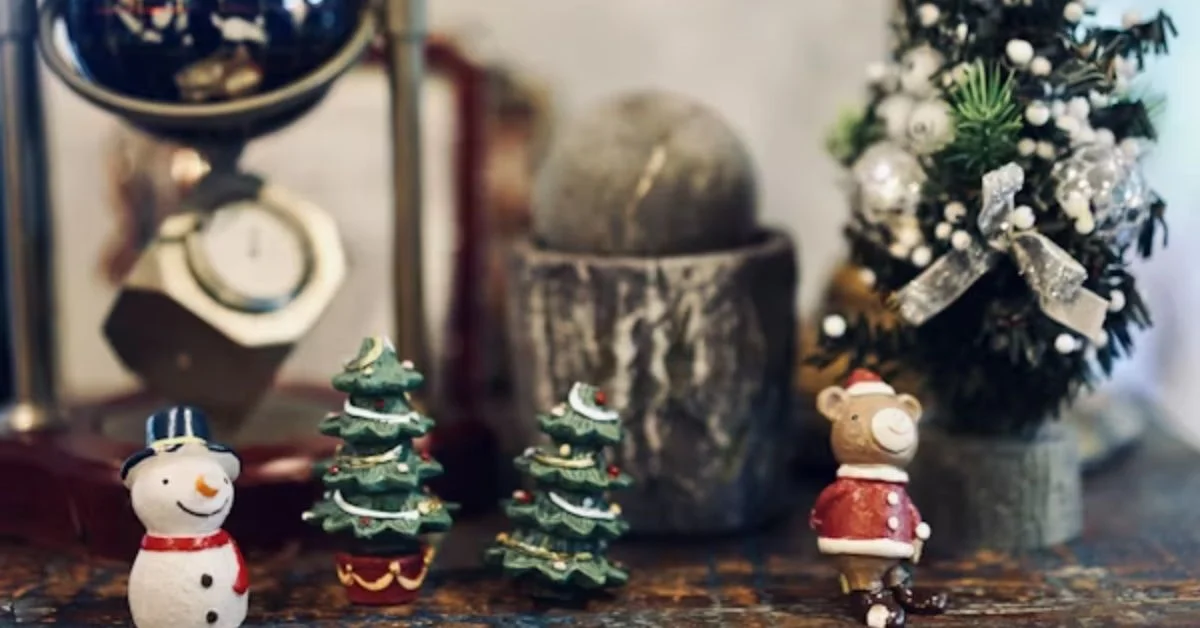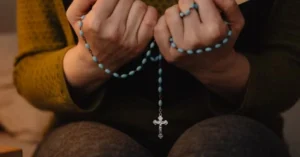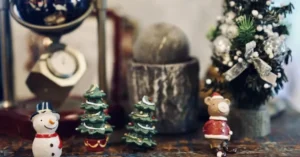The Christmas season is a time of joy, warmth, and meaningful traditions. Among the many customs that bring families together during the holidays, decorating the Christmas tree holds a special place. While ornaments come in countless materials today—glass, plastic, metal, fabric—there is one type that carries unmatched charm and nostalgia: wooden Christmas ornaments
Wooden ornaments are more than simple decorative objects; they are cultural artifacts that connect us to nature, tradition, and the values of simplicity and sustainability. Crafted with care and often passed down through generations, these ornaments represent both artistry and sentimentality. Their durability, eco-friendly nature, and timeless aesthetic make them beloved across cultures.
This article provides a comprehensive exploration of wooden Christmas ornaments, delving into their history, significance, crafting methods, designs, cultural traditions, and modern applications. We’ll also discuss how wooden ornaments remain relevant in an age of mass production, and why they continue to symbolize authenticity during a season often overshadowed by commercialism.
History of Wooden Christmas Ornaments
The origins of Christmas ornaments can be traced back hundreds of years to Europe, particularly Germany, where the tradition of decorating evergreen trees began. Early decorations were modest, consisting of apples, nuts, and handmade trinkets. With time, artisans began crafting small figures and designs out of wood, reflecting both religious and cultural symbolism.
During the 16th and 17th centuries, wood was the most accessible material for rural communities. Local craftsmen carved stars, angels, animals, and nativity figures. These ornaments were cherished not only as festive decorations but also as family heirlooms. Over generations, wooden ornaments spread across Europe, and later to America, carried by immigrants who wished to preserve their traditions in new lands.
Even as glass ornaments from places like Lauscha, Germany gained popularity in the 19th century, wooden ornaments retained their importance, particularly among families who valued handcrafted goods. The rustic charm of wood symbolized humility, endurance, and a closer connection to nature—a stark contrast to the fragility of glass.
The Symbolism of Wooden Ornaments
Wooden Christmas ornaments carry meanings that go beyond decoration. Each piece reflects deeper cultural, spiritual, and environmental symbolism.
- Connection to Nature
Wood comes directly from trees, making these ornaments a physical connection between the Christmas tree and the decoration itself. This harmony strengthens the symbolism of evergreen life and resilience. - Durability and Continuity
Unlike fragile glass or plastic that may break or fade, wooden ornaments last for decades, often becoming family treasures passed down through generations. - Simplicity and Authenticity
Wooden ornaments embrace the value of simplicity, reminding us that the holiday season is about connection, not excess. - Spiritual Significance
In Christian symbolism, wood also recalls the manger where Christ was born and the cross, making wooden ornaments deeply resonant for religious traditions.
Styles of Wooden Christmas Ornaments
Over time, wooden ornaments have evolved into a wide array of styles, reflecting both traditional designs and contemporary creativity.
| Style | Description |
|---|---|
| Traditional Carvings | Angels, stars, crosses, animals, and nativity figures crafted with hand tools. |
| Rustic Folk Art | Whimsical, colorful designs influenced by regional folk traditions. |
| Scandinavian Minimalist | Clean lines, natural finishes, geometric patterns inspired by Nordic simplicity. |
| Personalized Ornaments | Names, dates, or custom messages engraved or painted onto wood. |
| Modern Creative Styles | Abstract designs, laser-cut patterns, or eco-conscious contemporary shapes. |
Crafting Wooden Christmas Ornaments
Materials Used
The crafting of wooden ornaments involves selecting the right type of wood. Common choices include:
- Pine – Lightweight and easy to carve.
- Birch – Smooth texture, ideal for painting and engraving.
- Oak – Strong and durable, with a rich natural grain.
- Maple – Perfect for fine details and long-lasting ornaments.
- Bamboo – A sustainable choice gaining popularity in eco-conscious markets.
Techniques
There are several methods used to create wooden ornaments:
- Hand Carving – Traditional method using chisels, knives, and gouges to form intricate designs.
- Turning – Using a lathe to shape symmetrical ornaments like spheres and cylinders.
- Laser Cutting and Engraving – Modern techniques for precise, detailed designs and personalization.
- Painting and Staining – Decorative finishes that add color, protect the wood, or highlight natural grains.
- Pyrography (Wood Burning) – Artistic technique where designs are burned onto wood for a rustic effect.

Wooden Ornaments in Different Cultures
While wooden ornaments are now global, they hold particular significance in various cultures:
- German Traditions – Known for wooden nutcrackers, pyramids, and stars, Germany set the foundation for wooden holiday décor.
- Scandinavian Influence – Minimalist designs in neutral tones reflect Nordic simplicity and nature-inspired living.
- Eastern European Folk Art – Brightly painted wooden ornaments with floral or animal motifs.
- American Craft Traditions – Homemade wooden ornaments became popular during the Great Depression when resources were scarce, fostering a do-it-yourself spirit.
Eco-Friendly Appeal of Wooden Ornaments
In today’s era of climate awareness, wooden Christmas ornaments offer an eco-friendly alternative to plastic. Their environmental benefits include:
- Biodegradability – Unlike plastic, wooden ornaments decompose naturally.
- Renewable Resource – Wood is sustainable when harvested responsibly.
- Durability – Long-lasting ornaments reduce waste compared to disposable decorations.
- Handcrafted Economy – Supporting artisans encourages small-scale, sustainable production.
Decorating with Wooden Ornaments
Wooden ornaments can be styled in numerous ways to enhance festive décor.
Classic Elegance
Pair natural wood ornaments with white lights, pinecones, and gold ribbons for a timeless tree design.
Rustic Farmhouse Theme
Combine wooden stars, reindeer, and snowflakes with burlap and plaid for a cozy farmhouse look.
Scandinavian Minimalism
Choose simple geometric wooden designs, paired with neutral colors like white, silver, and natural green.
Personalized Trees
Engraved wooden ornaments featuring family names or important dates create a tree filled with memories.
Outdoor-Friendly Décor
Because of their durability, wooden ornaments can also be used for decorating porches, fences, and outdoor trees.
Care and Preservation of Wooden Ornaments
Proper care ensures that wooden ornaments last for generations.
| Care Tip | Purpose |
|---|---|
| Store in dry conditions | Prevents wood from swelling or cracking due to moisture. |
| Wrap individually | Avoids scratches, chips, or paint transfer. |
| Use natural oils occasionally | Preserves luster and protects the surface of unfinished wood. |
| Keep away from heat sources | Prevents warping or cracking. |
Wooden Ornaments vs. Other Materials
| Feature | Wooden Ornaments | Glass Ornaments | Plastic Ornaments |
|---|---|---|---|
| Durability | Long-lasting, resistant to breaking | Fragile, easily shattered | Durable but may fade |
| Eco-Friendliness | Biodegradable, sustainable | Not eco-friendly | Non-biodegradable, polluting |
| Artistic Value | High, especially with handcrafting | High, but fragile | Lower, often mass-produced |
| Cost | Moderate, varies with craftsmanship | Often expensive | Generally inexpensive |
| Sentimental Value | Strong, often passed down as heirlooms | Moderate | Low, disposable |
Wooden Ornaments as Gifts
One of the most cherished uses of wooden ornaments is gifting. Personalized or handcrafted pieces symbolize thoughtfulness and last far longer than many other holiday gifts. Couples often receive engraved ornaments as wedding or baby keepsakes, while families exchange custom ornaments that grow into collections over the years.
Future of Wooden Christmas Ornaments
The future of wooden ornaments looks promising due to their timeless nature and eco-conscious appeal. As society grows more aware of environmental impact, handmade and sustainable holiday décor will continue to rise in demand. Innovations such as 3D wood printing, eco-friendly stains, and community-based artisan markets will ensure that wooden ornaments remain both relevant and beloved.
Conclusion: Wooden Christmas Ornaments
Wooden Christmas ornaments embody the very essence of the holiday season: tradition, sustainability, beauty, and heartfelt connection. They are not merely objects but symbols of craftsmanship, values, and memories that span generations. From rustic folk art to modern laser-cut designs, wooden ornaments prove that simplicity and elegance go hand in hand.
In a world often dominated by mass production and disposability, wooden ornaments remind us of the enduring beauty of nature, the importance of sustainability, and the joy of creating traditions that last. Whether hung on a tree, gifted to a loved one, or cherished as family heirlooms, they continue to brighten Christmas with authenticity and warmth.
FAQs: Wooden Christmas Ornaments
1. Why are wooden Christmas ornaments special?
They are durable, eco-friendly, and often handcrafted, making them both unique and meaningful compared to mass-produced decorations.
2. How do you care for wooden ornaments?
Keep them dry, store individually wrapped, and occasionally apply natural oils to preserve their appearance.
3. Are wooden ornaments eco-friendly?
Yes, they are biodegradable, made from renewable resources, and promote sustainable craftsmanship.
4. Can wooden ornaments be personalized?
Absolutely. Many artisans and retailers offer engraving, painting, or pyrography to add names, dates, or designs.
5. Are wooden ornaments suitable as gifts?
Yes, they make excellent gifts, especially personalized ones, as they carry sentimental value and last for decades.
For more information, click here.









